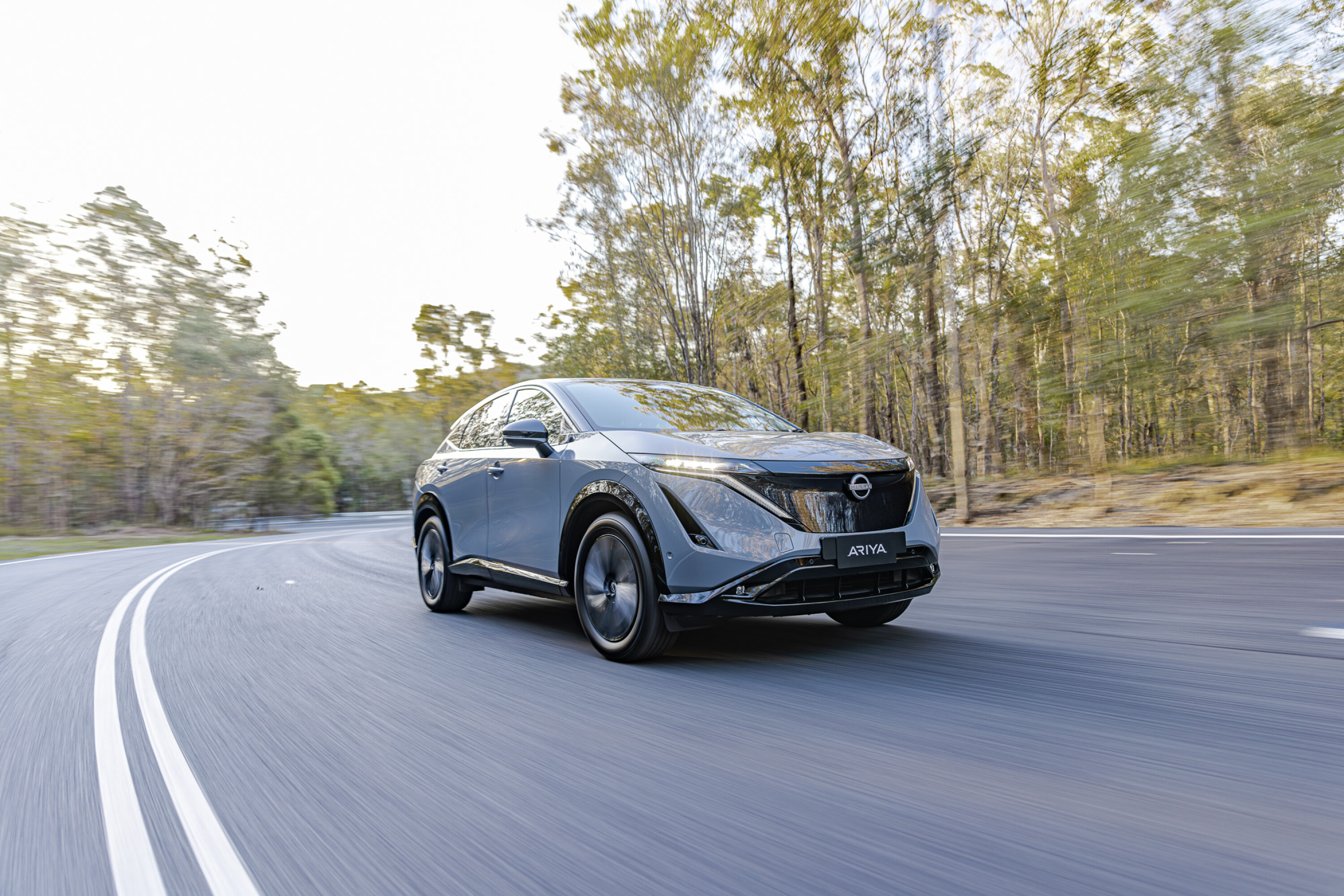Things we like
- Zen-like cabin
- Quiet and composed on-road
- World-class design
Not so much
- Still can’t buy one in Australia
- Australian details scarce
- Outdated once we finally get it here
The Ariya is a pivotal vehicle for Nissan.
Not only because it will enter a market where appetite is extremely high but also because it represents the next phase in the future of the brand as Nissan continues to embark on its Ambition 30 strategy.
That strategy will essentially see Nissan accelerate its electrified program to meet diverse and growing customer needs, with Nissan announcing its plan to introduce 23 electrified vehicles – including 15 EVs – by 2030.
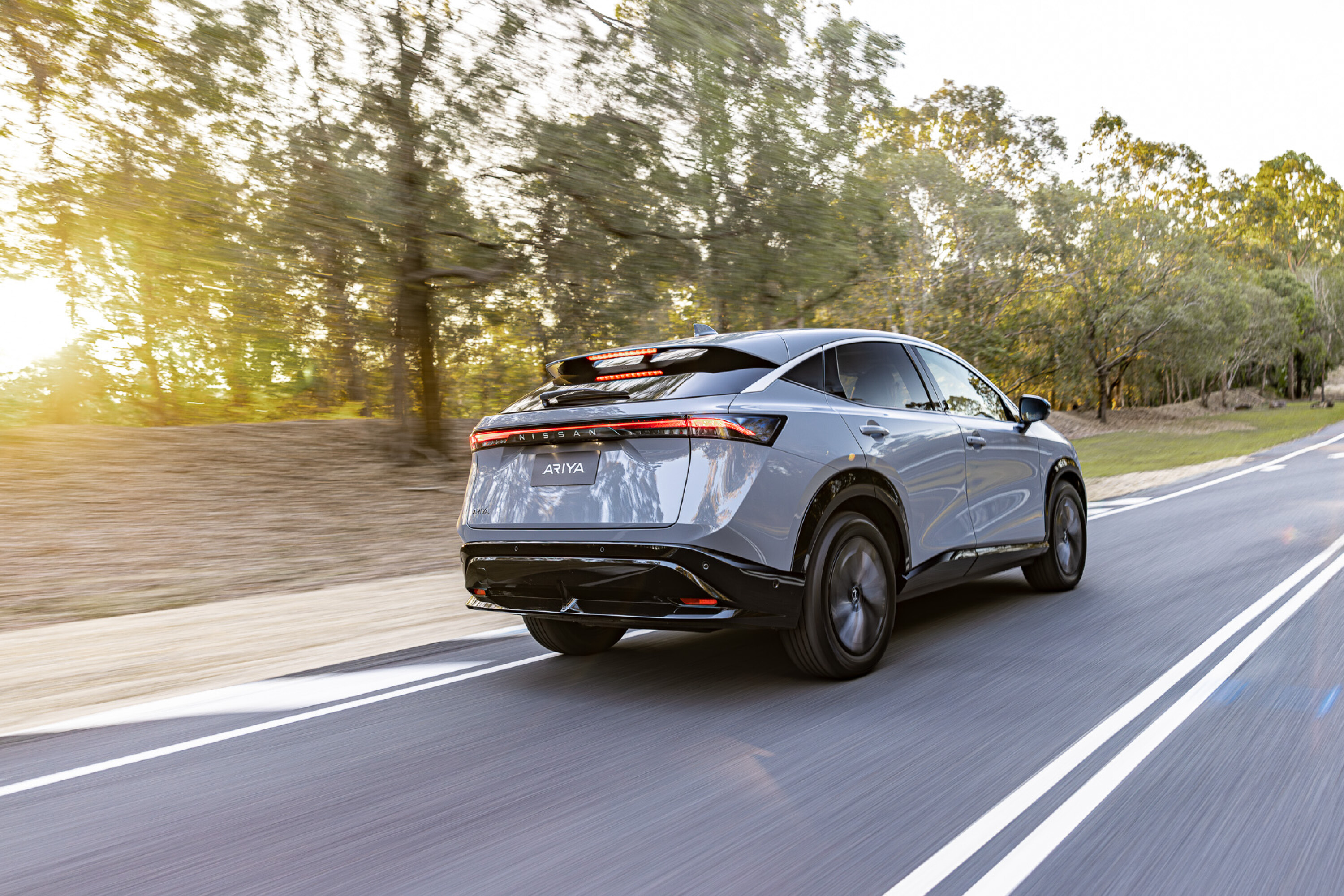
One of the first EVs launched (internationally, but not here) is the big brother of the EV-pioneering Nissan Leaf, the Ariya. Built on the CMF-EV platform, the three-model Ariya range includes the 63kW, 87kW and 87kW e4orce variants.
The line-up begins with the entry-level 63kW front-wheel drive variant, which is powered by a 63kW battery and single electric 160kW/300Nm motor – it comes with a modest battery range of 404km. The range-topper is the 87kW e-4orce variant, with two electric motors (combined 225kW and 600Nm) and a range of 498km from its 87kW battery.
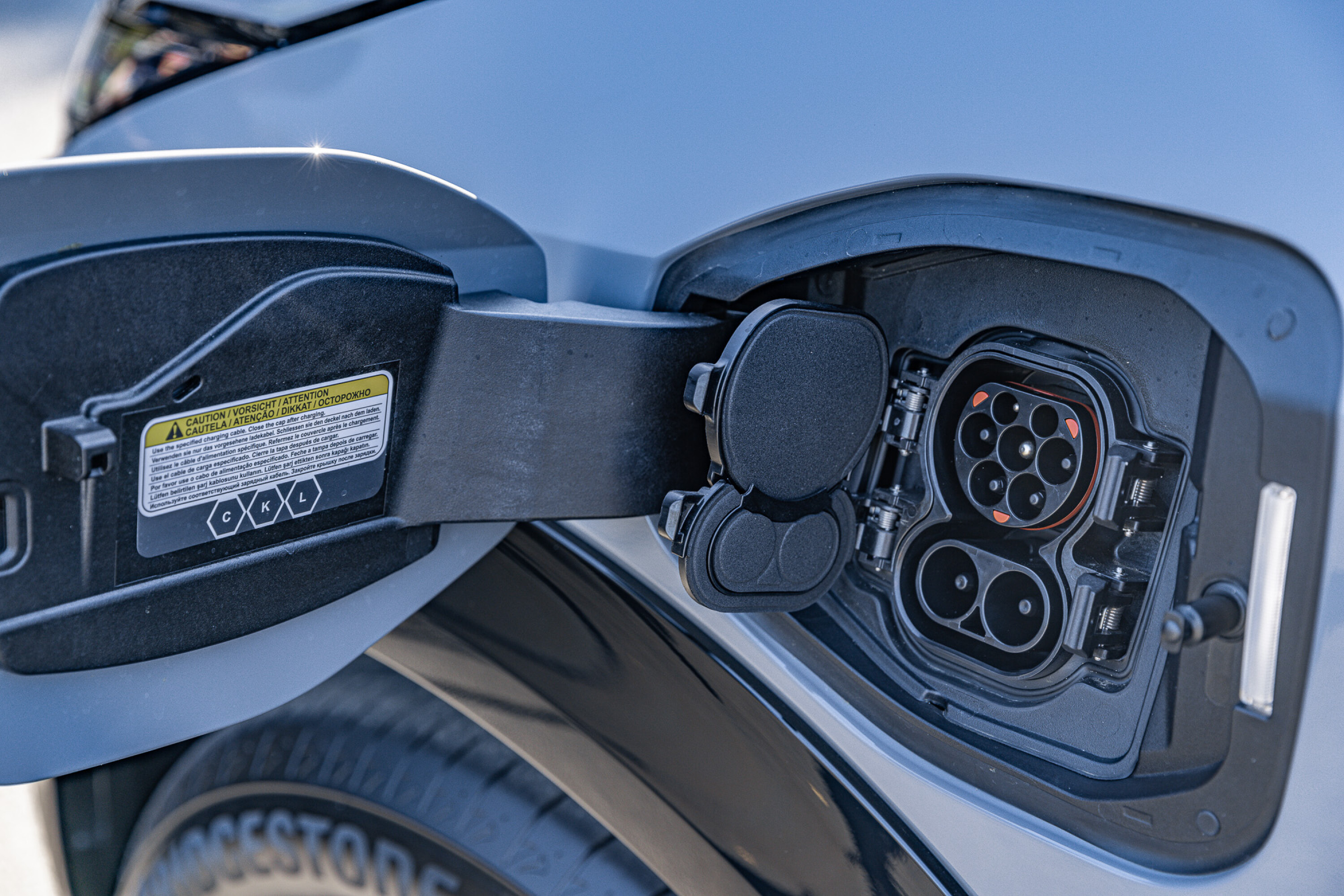
The vehicle we’re driving, however, is a pre-production (for Australia), European-spec 87kW/2WD variant sans e4orce. What that means it is that it still needs to go through the required homologation process for Australia. It’s fitted with a 178kW/300Nm motor and 87kW battery, to give it a driving range of 536km.
Power stats
| Battery capacity | 87kWh |
|---|---|
| Output | 178kW |
| Torque | 300Nm |
| Acceleration (0-100km/h) | 7.6 sec |
| Top speed | 160km/h |
| Estimated range | 536km |
Japanese DNA
Led by Senior Vice President of Global Design, Alfonso Albaisa, Nissan has imbued its Ariya SUV with a “timeless Japanese futurism” design language, in an effort to reconnect the Nissan brand with its rich Japanese heritage.
To this end, the visually striking front “shield” features a traditional Japanese design pattern called Kumiko, a technique used in Japan to assemble wooden pieces without the use of nails that dates back to the 17th century.

This distinctive Japanese DNA continues in the minimalistic cabin, with Kumiko patterns found throughout. Even the lighting utilises a traditional Japanese lantern called “andon”, providing a calming and inviting atmosphere, with the warm glow enhancing the illusion of space.
Double-glazed windows, thick carpet and an acoustic windscreen insulate the cabin well, ensuring it remains extremely quiet when driven on bitumen. The lounge-like ‘Zero Gravity’ seating is extremely supportive and comfortable, as are the rear pews.
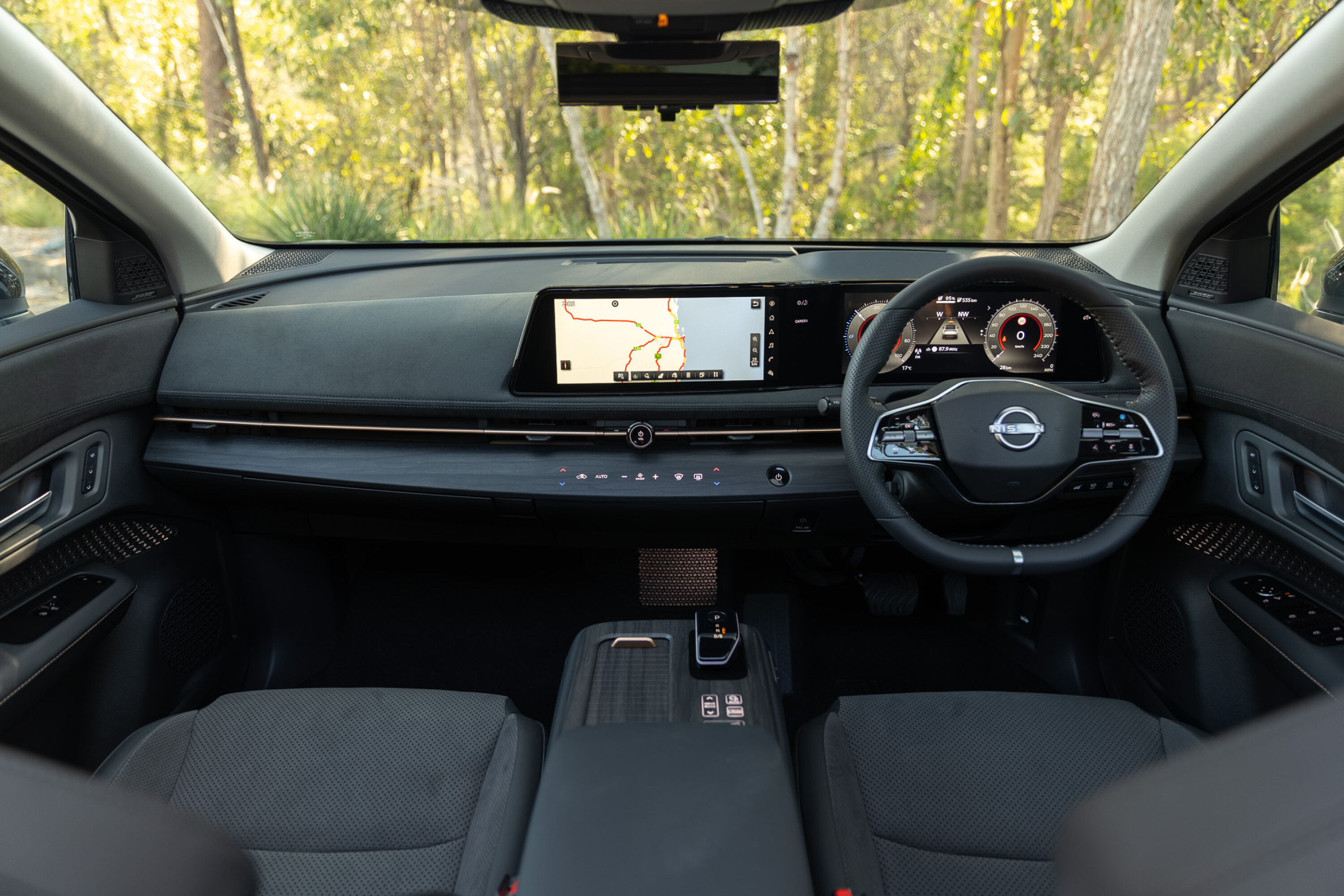
It’s clear that space or, more precisely, liberating space, was a priority in the design phase, evident in the minimalistic use of buttons and dials, and the smart use of storage – highlighted by the centre console, which can move fore and aft at the push of an “actual” button.
To deliver a human-centric approach to function, another innovative feature is the implementation of haptic touch buttons – in fact, Alfonso Albaisa admitted to us that it is one of his favourite design elements of the Ariya.

“I love the haptic because that was a breakthrough,” he told Wheels. “Nobody is doing haptics like that … When you open the doors next time, look at the power window switches and look at everything – it is blacked out. We negotiated heavily that even with the power window switches, you don’t see the icons. But when you hit the starter button, everything comes from nothing.”
The haptic buttons positioned on faux wood eliminate the need for most buttons, and when combined with the subtle use of hidden window sills, ensures a minimalist, clean cabin. A significant problem with haptic controls is that feedback needs to be immediate once the button is pressed, so that the user is aware that the button was indeed pushed. This isn’t a problem with the Ariya, though, with feedback obvious and instant.

Another modern use of technology is the inclusion of a smartphone-like swipe function which can reposition apps – like mapping – from the central 12.3-inch touchscreen to the 12.3-inch driver digital display.
It’s a bit fiddly to use and, at the time of writing, only the in-built mapping would transition across. The central touchscreen also has Apple CarPlay/Android Auto smartphone mirroring
Drive impressions
That feeling of calmness when you first enter the cabin transfers into the way the Ariya behaves when on-road – it’s calm, quiet and refined.
It’s also where the addition of an array of those sound-deadening tools previously mentioned (thicker carpet, double-glazed windows) pays dividends.
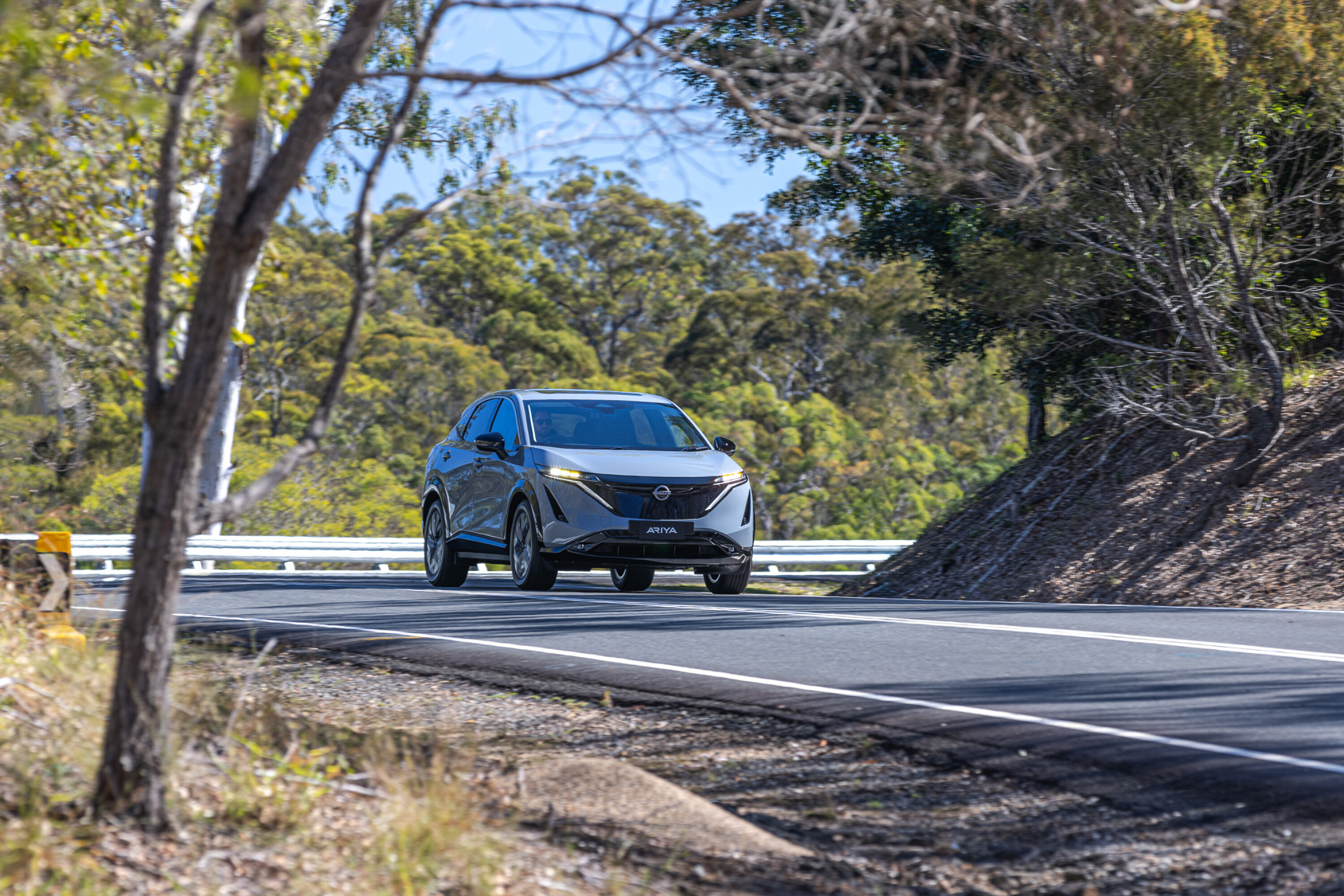
The suspension soaks up road imperfections, which is essential to maintain the vehicle’s zen-like cabin
The steering feels nicely weighted and torque is delivered when it’s most required. Time spent behind the wheel – on a private test loop – was limited, but we were able to be a bit more ‘liberal’ with the right pedal, and the Ariya impressed with its ability to effortlessly conjure up high speed between tight bends. In the process, the suspension soaks up road imperfections, which is essential to maintain the vehicle’s zen-like cabin.
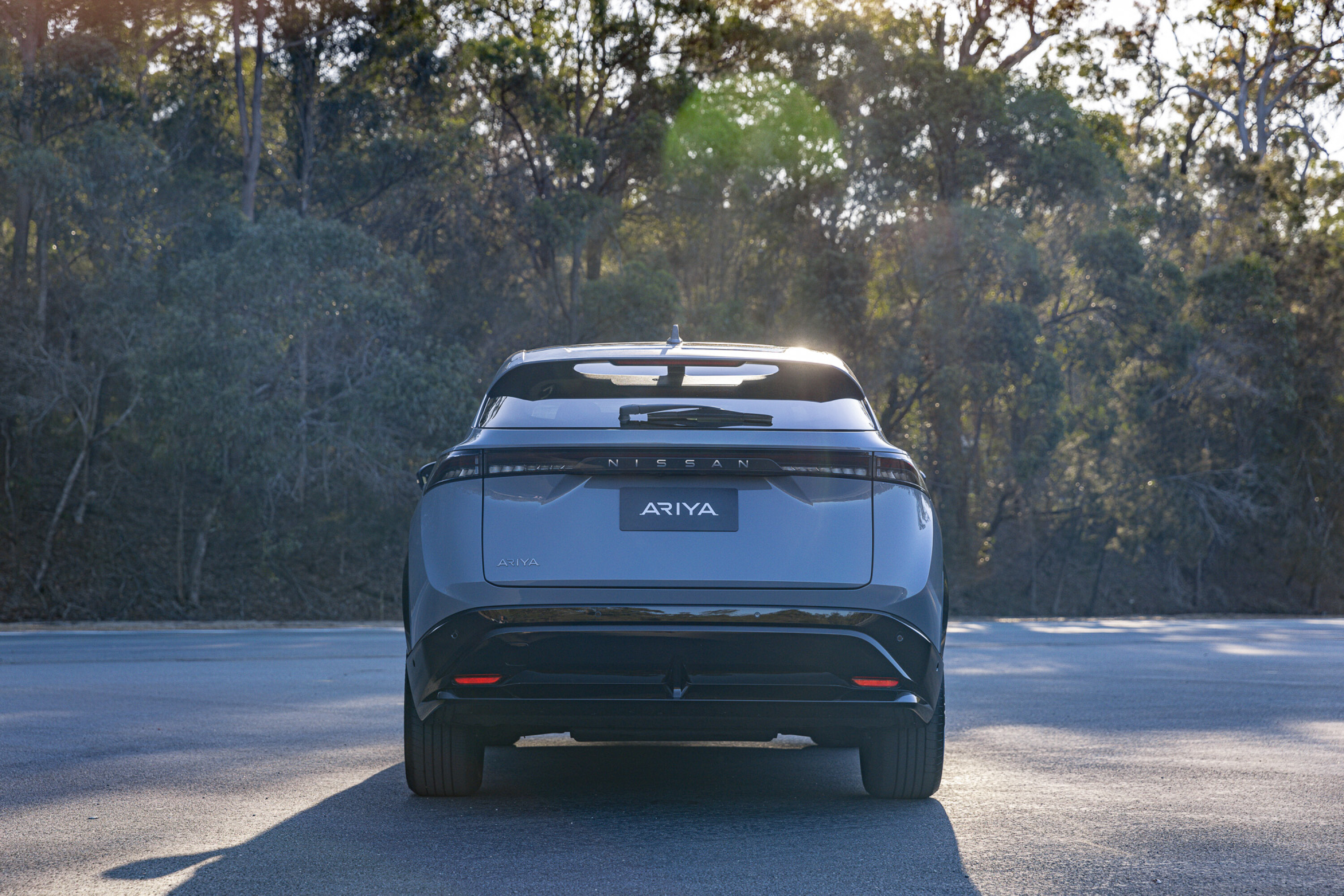
We did briefly use the vehicle’s e-Pedal function, which in theory means you can drive the car by just using the accelerator pedal – doing so will activate regenerative braking. It works well, but a longer test will be essential to really test it out.
Verdict
Nissan holds high hopes for a vehicle that has been engineered to inspire the transition to the next generation of electric vehicles, and the Ariya fits that mantle superbly.
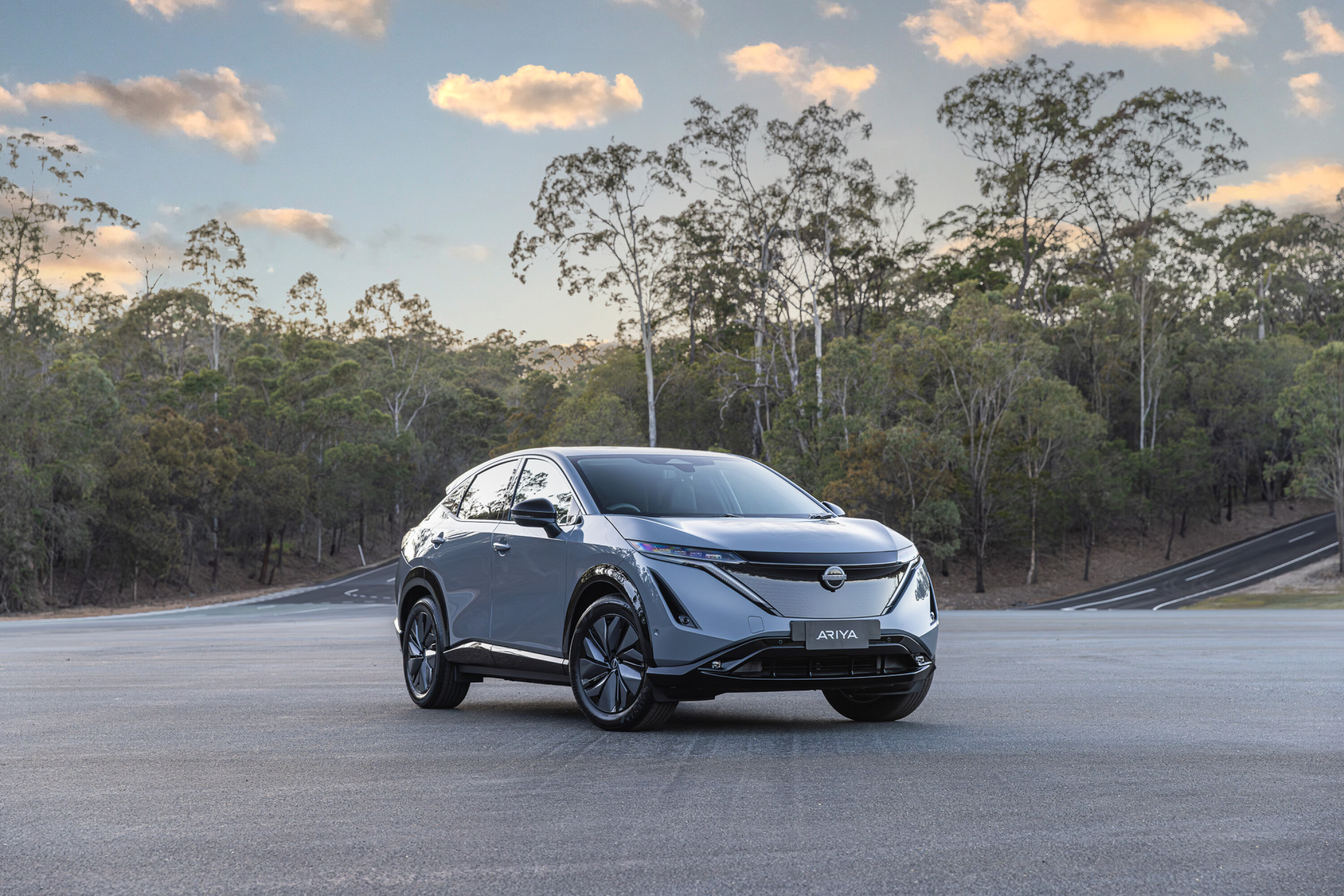
Its futuristic design and high attention to detail, as well as its reconnection with its Japanese heritage make it an extremely endearing vehicle. If anything, it has made us extremely giddy for the next generation of Nissan vehicles – EV or not.
Unfortunately we’ll have to wait until at least 2024 (that’s yet to be confirmed) before we can drive a homologated model in Australia, so charging times and more in-depth analysis will have to wait until then. Stay tuned.
Specs (Japan market specs)
| Battery capacity | 87kWh |
|---|---|
| Output | 178kW |
| Torque | 300Nm |
| Acceleration (0-100km/h) | 7.6 sec |
| Top speed | 160km/h |
| Estimated range | 536km |
| Length | 4595mm |
| Width | 1850mm |
| Height | 1655mm |
| Weight (depending on model) | 1900-2200kg |
| Wheelbase | 2775mm |
| Luggage capacity | 466L |
| Tyre size | 235/55 R19 |
More EV stories to help you choose the best car for your needs
- ? EV news, reviews, advice & guides
- ❓ Short & sweet: Your EV questions answered
- ⚡ New EVs: Everything coming to Australia
- ? Australia’s EVs with the longest driving range
- ⚖️ Best-value EVs by driving range
- ? How much do EVs cost in Australia?
- ? How much more expensive are EVs?
- ⚖️ Number crunching: Is it time to switch to an EV?
- ♻ Should you buy a used EV?
- ?️ Are EVs more expensive to insure?
- ? Costs compared: Charging an EV vs fueling a car
- ? EV charging guide
- ?? EV servicing explained
- ? EV battery types explained
- ? When do EV batteries need replacing?
- ? Hydrogen v EVs: What’s best for Oz?
- ? How sustainable are EVs, really?
MORE advice stories to help you with buying and owning a car
Things we like
- Zen-like cabin
- Quiet and composed on-road
- World-class design
Not so much
- Still can’t buy one in Australia
- Australian details scarce
- Outdated once we finally get it here


